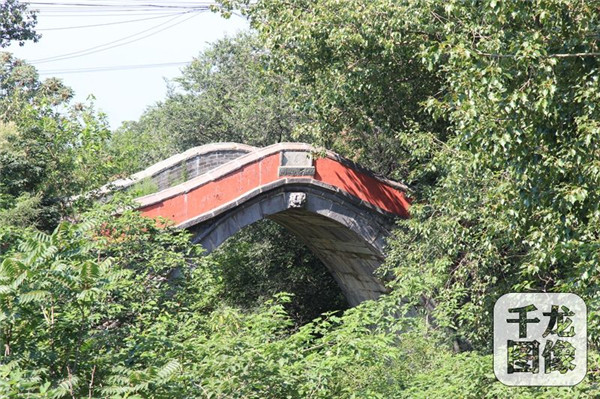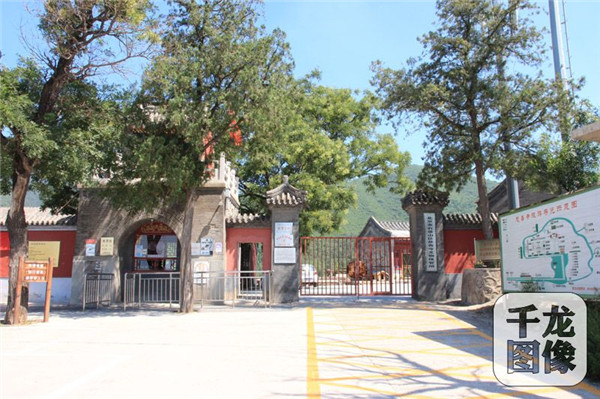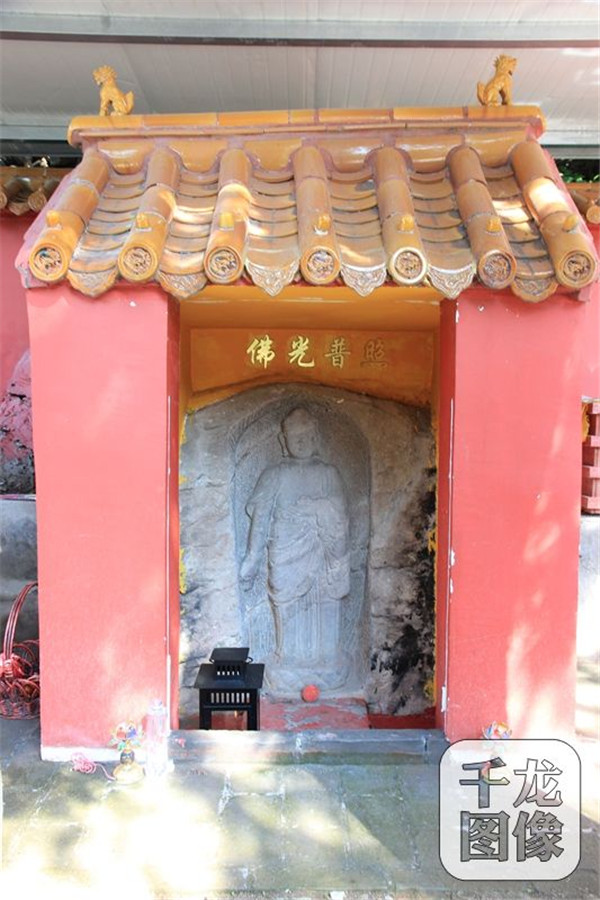
The Wanshan Bridge crosses over the Black Dragon Gully. [Photo/Qianlong]
Wanshan Bridge went under construction in 1194, only two years later when the Lugou Bridge (Marco Polo Bridge) was constructed but the two are so different in fame and stories. The Lugou Bridge witnessed the miserable past of China’s war time in the 20th century, while Wanshan Bridge leaves us a touchable story unknown by many.
Wanshan Bridge hides itself in the mountains of Shijingshan District, connecting the transport between the Qinglong Mountain and Tiantai Mountain where Cishan Temple sits.

The Cishan Temple is rarely visited. [Photo/Qianlong]
Legend goes that some day in a colorful autumn hundreds of years ago, a woman in shabby clothes was trekking on bare foot to the mountains of Shijingshan from South China. She was bleeding on her feet. Her lip was chapped. Her face looked sallow. And She was black and blue all over the body.
When she was muscling her way down from a slope of Black Dragon Gully, she was blocked by wild water in a gully ten-meter-plus deep and 30-meter-plus wide . She dropped to her knees and pray to the god: “I’m Feixia who has walked half a year to get here. I have to go to Cishan Temple and offer incense to Buddha before the dawn of tomorrow so that I can save the life of my husband. Please, my infinitely merciful Goddess of Mercy, direct me a shortcut to the Cishan Temple. If I manage to offer incense to Buddha, if I succeed in saving the life of my husband, I will, from then on, become a nun, contributing my entire lifetime to serve you. ”
Finishing her words, Faxia closed her eyes to begin her first kowtow. She heard stones rambling but she didn’t open her eyes for she knew eyes should be shut and the heart should be calm when praying to a god. When she bowed down again, she was heavily pushed backward for several meters and knocked down face up. She felt unbearable hurt in the heart, but still didn’t open her eyes. She fumbled her face and felt warm blood was bleeding from her cheek. For the third time when she kowtowed, she found out the ground had been no longer dirt but stone. Feixia stood up after the third kowtow. As soon as she opened her eyes gently, she was totally stunned. A rainbow stone bridge was right there over the deep gully in front of her.

A sulpture of Feixia, the heroine of the legend, who saved her husband sits to the north end of the Wanshan Bridge. [Photo/Qianlong]
The finest bridge was 17 to 18 meters long and three meters wide, made of stone from the base to the arch. It was of spectacular strong and stood firmly in the wild water. Fences of the bridge were dazzling, brightening the whole gully in gorgeous colors. Feixia tiptoed the bridge, seeing a stone plaque on the peak of the outside fence in the south read Wanshan Bridge, and a stone lion below was staring the flood in the gully. Feixia crossed the bridge and walked toward northwest about 2.5 kilometers before she arrived at Tiantai Mountain. She managed to offer incense to Buddha in time before the dawn next morning, and went back the bridge.

Wanshan Bridge of the Qing Dynasty [Photo/Qianlong]
As soon as she arrived at the bridge, she sat down crossed- legged on a stone several meters away from the bridge. At the very time, torrential rains fell, but Feixia sat there in absolute still, with tranquility and calmness on her face. Ten days later, people were delighted to find a new bridge was there and they saw a dignified woman sitting on a stone platform to the north end of the bridge. She was like a peace of jade, easefully staying there . The news flied, locals built a stone arch above the platform where Feixia sat on and called Feixia the Ambassador Buddha. Later, in each side of the arch, a cypress was planted. It is said they are the husband of Feixia, who came to accompany her. They can be still seen to date.

The sculpture of Feixia is accompanied by two cypress trees. [Photo/Qianlong]
From then on, people who went to Cishan Temple had to cross the Wanshan Bridge or he or she would be thought to be insincere.
A tale is a tale. Wanshan Bridge was built not by god but by Emperor Zhangzong of Jin Dynasty (1127-1234) for the convenience to visit the temple as a summer resort where two fountains at the time poured water from mountain all year round into the gully of Black Dragon. It was rebuilt in 1582 of the Ming Dynasty (1368-1644), and renovated twice in 1884 and 1891 of the Qing Dynasty (1644-1911).
If you visit the bridge today, you will admire the bridge of the Qing’s version.

The two cypress trees are said to be the husband of Feixia, who came to accompany her. [Photo /Qianlong]
Getting there: take Bus no. 597 at Pingguoyuan Subway Station, get off the bus at Heshitou Village, and walk along the Heichen Road about 2.4 kilometers.
Admission fee: free
Open time: 24 hours every day
Nearby scenic spot:Badachu Park
Source: english.qianlong.com




